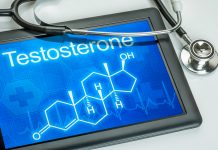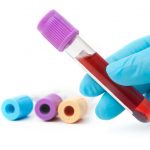By Nick Gold
Erectile dysfunction (also known more commonly as impotence or sexual dysfunction) is the inability to maintain a sufficiently rigid erection for a satisfying sexual experience.
According to the Global Survey of Sexual Attitudes and Behaviors, erectile dysfunction affects approximately 5-28% of men aged 40-80 years. The study was done on adults from 29 different countries.
This health issue has been clearly defined back in 1992, but it has been observed and recorded for thousands of years. The ancient Egyptians had papyrus drawings of sexual positions as well as remedies and cures for afflictions known as “weakness of the male member”.
Sexual dysfunction can be diagnosed by questionnaires or lab testing and there are numerous ways of managing and improving its symptoms.
Erectile dysfunction causes
This type of health problem can have multiple causes and the most common ones are:
- Pharmacologic – caused by different types of medications such as antidepressants, analgesic narcotics,
anti acids , antihypertensives, etc. There are more than 200 medications which have been associated with sexual dysfunction and some of them decrease the testosterone levels which in turn lower erection rigidity, sex drive, etc. - Endocrinologic – this refers to testosterone deficiency and hypogonadism. Testosterone replacement therapy could help in this case, but it might not be sufficient to achieve hard erections, and it must be combined with other treatment options. Diabetes is a disease which might be linked to ED because it causes damage to the microvasculature of the body as well as the nervous system.
- Neurogenic – caused by aging or neurodegenerative diseases such as Alzheimer’s or Parkinson’s disease. Neurogenic causes refer to damages to the nervous system and can include strokes, injuries to spinal cord, etc. These health problems can severely affect erection quality regardless of age.
- Vasculogenic – health issues such as arteriosclerosis, high blood pressure, high triglyceride levels can also cause erectile dysfunction. Men with blood pressure higher than 130/85, a body mass index over 30 as well as triglycerides over 150 mg/dL are at risk of developing ED at some point in the future. Do you have venous leakage?
- Psychogenic – this refers to improper stress management, feelings of guilt, shame, depression, anxiety, lack of self-confidence, internal sexual conflict, etc. Men who have very stressful lives are more likely to have weak erections as well as poor libido.
It is worth mentioning that unhealthy habits such as smoking, excessive alcohol consumption, and lack of exercise can drastically increase the likelihood of developing impotence for men of all ages.
Before treating ED, doctors first assess the health of the cardiovascular system (heart, veins, and arteries) to determine if it is healthy enough for proper sexual activity. A high cardiac risk might indicate that the patient needs treatment for a heart condition first, before receiving treatment for erectile dysfunction.
Sexual dysfunction management and treatment options beyond testosterone
Impotence or sexual dysfunction is treated in small steps and it begins by changing lifestyle risk factors such as quitting smoking, lowering alcohol consumption, switching to a healthier diet, engaging in regular physical activities, etc.
PDE-5 inhibitors
The next step is to take advantage of first-line medical therapies such as using phosphodiesterase type 5 inhibitors (PDE5Is). Some of those inhibitors are Sildenafil (most commonly known as Viagra), Tadalafil (aka Cialis), Vardenafil (aka Levitra). These substances lead to increased smooth muscle tone and should be taken approximately 1 hour before sexual intercourse (for Sildenafil and Vardenafil) and up to 12 hours for Tadalafil.
These PDE-5 inhibitors are known to be safe and can be used by men of all ages, except for those who take nitrates on a daily basis. Some people respond better to certain types of inhibitors, so trying more than just a single substance is recommended for achieving the desired results.
Vacuum Erection Device
There are numerous types of vacuum erection devices on the market and most of them generally consist of a cylinder which is placed on the penis and creates an air-tight seal to the body, causing negative pressure and improving blood flow. A constriction band is placed at the base of the penis to maintain an erection and allowing sexual intercourse after the cylinder is removed.
This type of treatment is considered second-line therapy for sexual dysfunction and is a non-invasive way of treating it. Manufacturers create VEDs of various sizes and they ship them with instruction manuals to help patients use the cylinders properly to achieve an erection.
Intraurethral Suppositories
This treatment option consists of inserting small suppositories into the urethra to allow smooth muscle relaxation. The penis is massaged with both hands to allow the corpora cavernosa to absorb the medicine. One of the most common side effects of this treatment option is penile pain, but it can be a practical treatment option for certain people. The first Intraurethral suppository might be administered under medical supervision to prevent unwanted injuries to the shaft.
Intracavernosal Injections
Patients who suffer from erectile dysfunction might also want to try intracavernosal injections which are formulated with a special substance that inhibits vasoconstriction. This allows the patient to achieve a satisfying erection and this method is considered to be one of the safest and most common treatment options for ED.
The first injection is done under medical supervision to avoid damaging important areas of the penis such as the urethra or penile nerves. Once the patients get over the anxiety of having needles into their penis, they can learn how to administer injections on their own.
Bimix, Trimix, and Quadmix are good examples of intracavernosal injections for achieving hard erections. They are available by prescription from different pharmacies.
Penile Implant Surgery
The third-line therapy for ED consists of penile implant surgery which means inserting non-inflatable implants into the penis.
There are 2-piece and 3-piece inflatable penile prosthesis which can be inserted into the penis. A small pump is inserted into the scrotum and helps to inflate the implants when an erection is required. Although there is the possibility of developing infections, penile implant surgery is a popular treatment for erectile dysfunction and it can be more cost-effective in the long run.
Conclusion
Although erectile dysfunction is still a taboo subject for some people, this medical condition has been heavily researched, it can be properly diagnosed in a variety of ways, and multiple treatment options have been created to help patients achieve sexual satisfaction. One of the best and easiest ways to diagnose ED is by using blood tests to detect hormone imbalances.
Patients who are not happy with their performance in bed should make the first and most important step and visit a doctor to get more information about ED, getting adequate physical examination as well as treatment. Luckily, medical improvements are made each year and treatment strategies are refined and enhanced, so treating impotence is increasingly safer and easier these days!

















